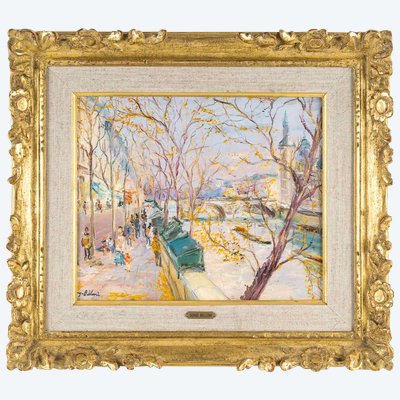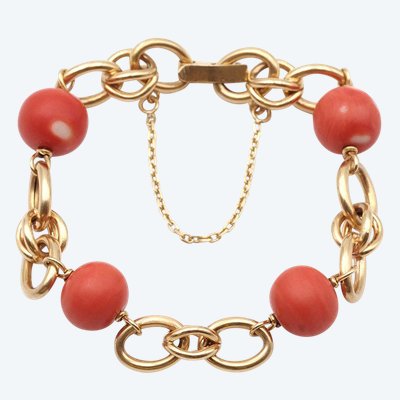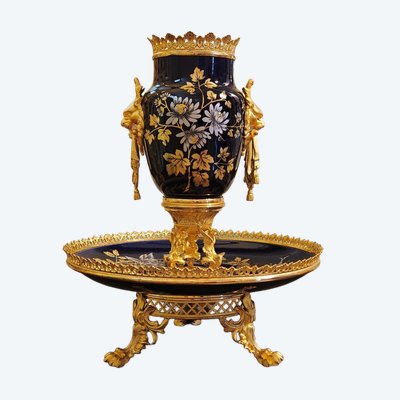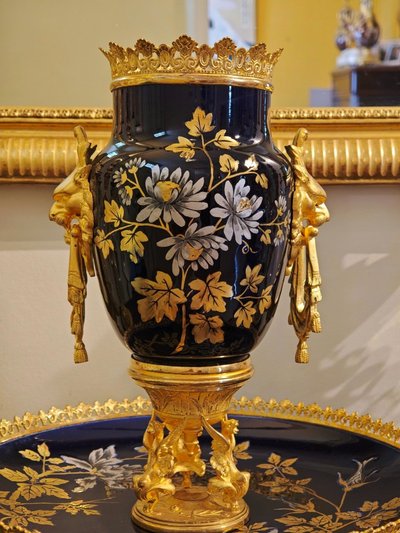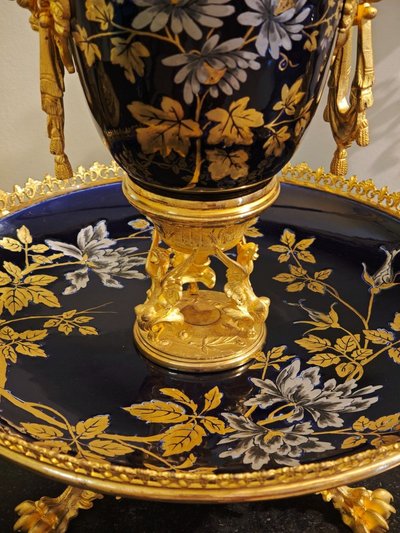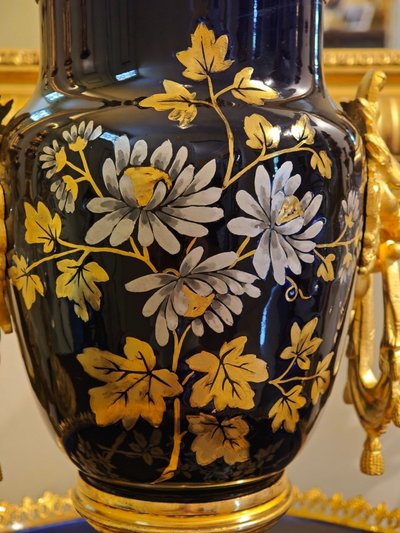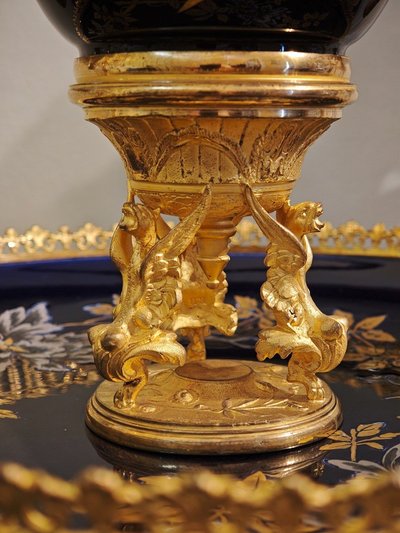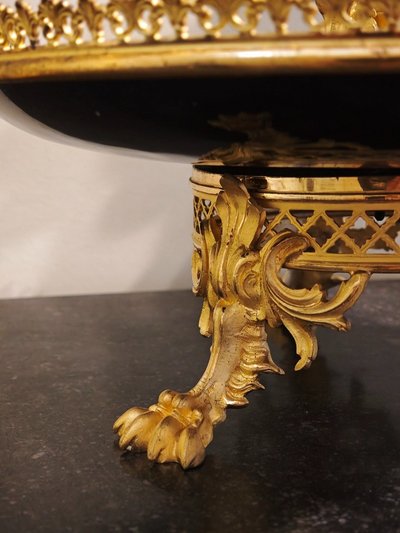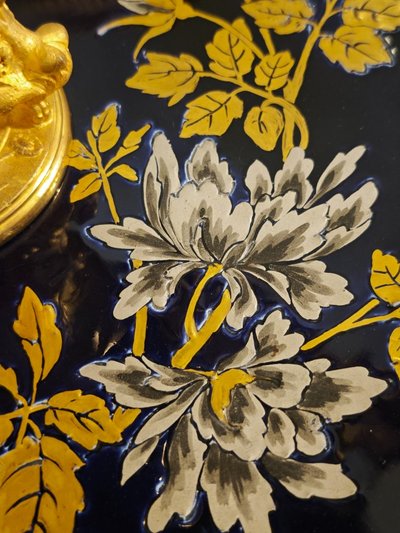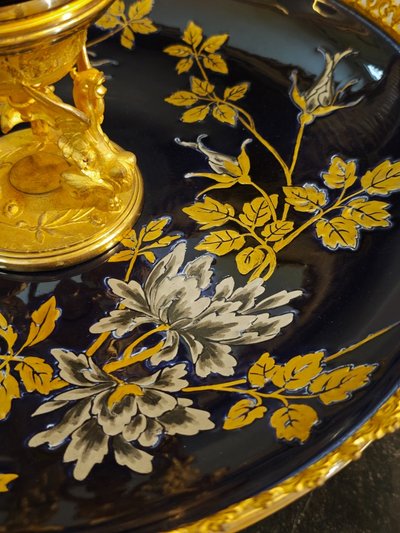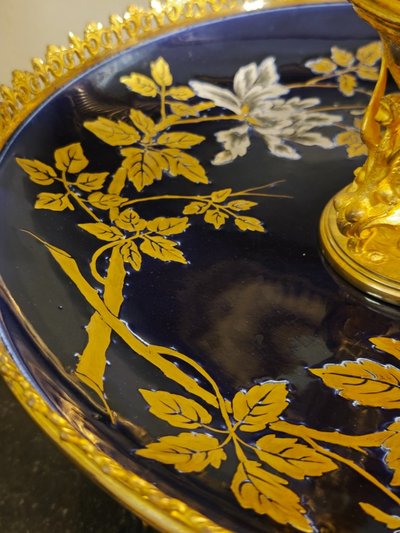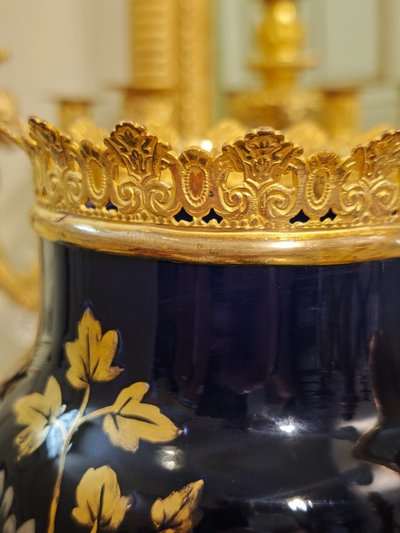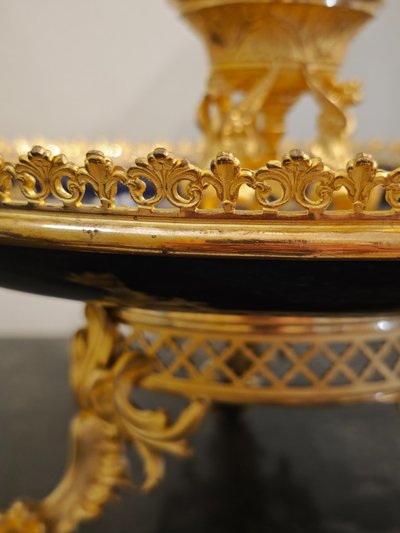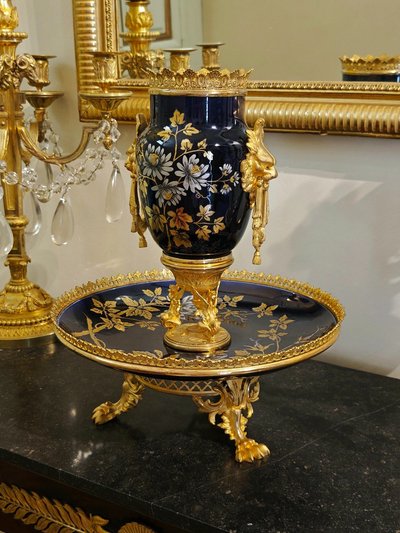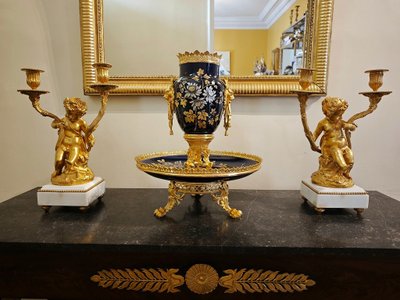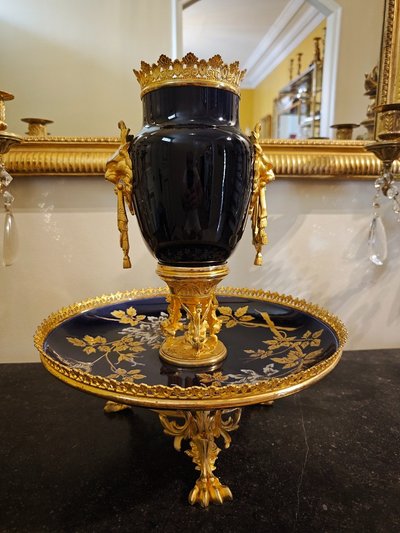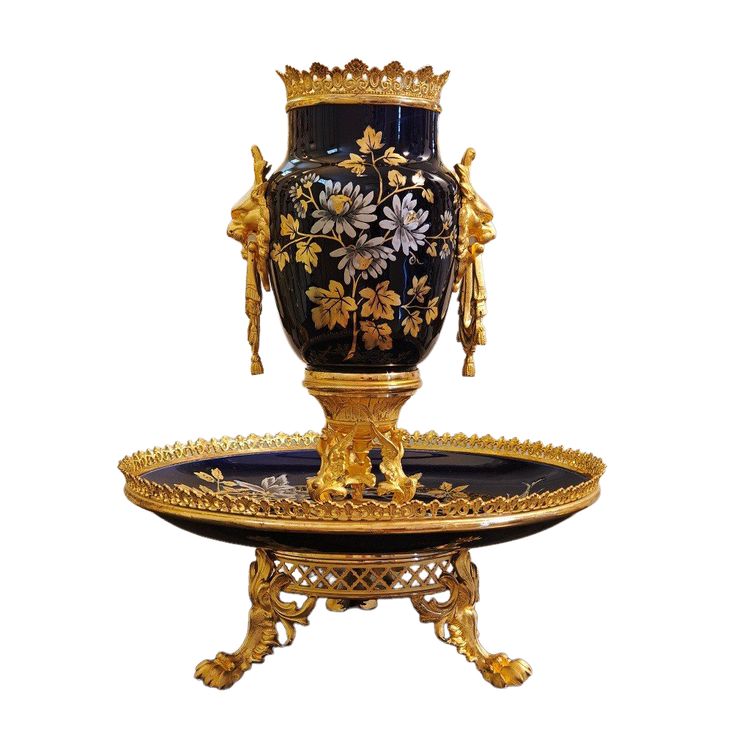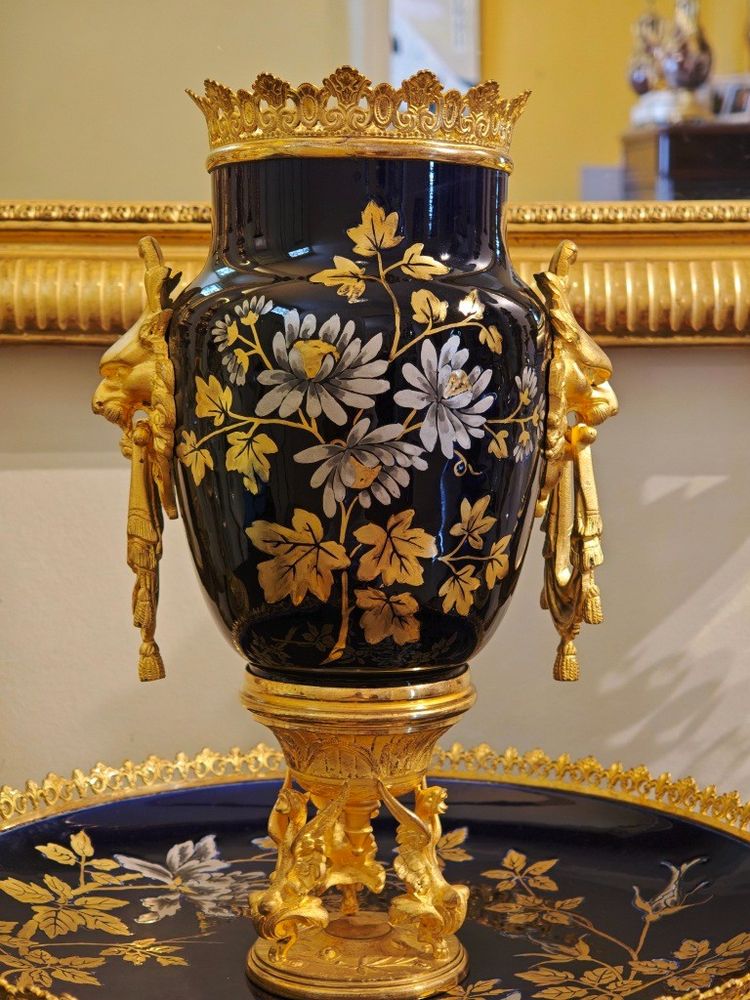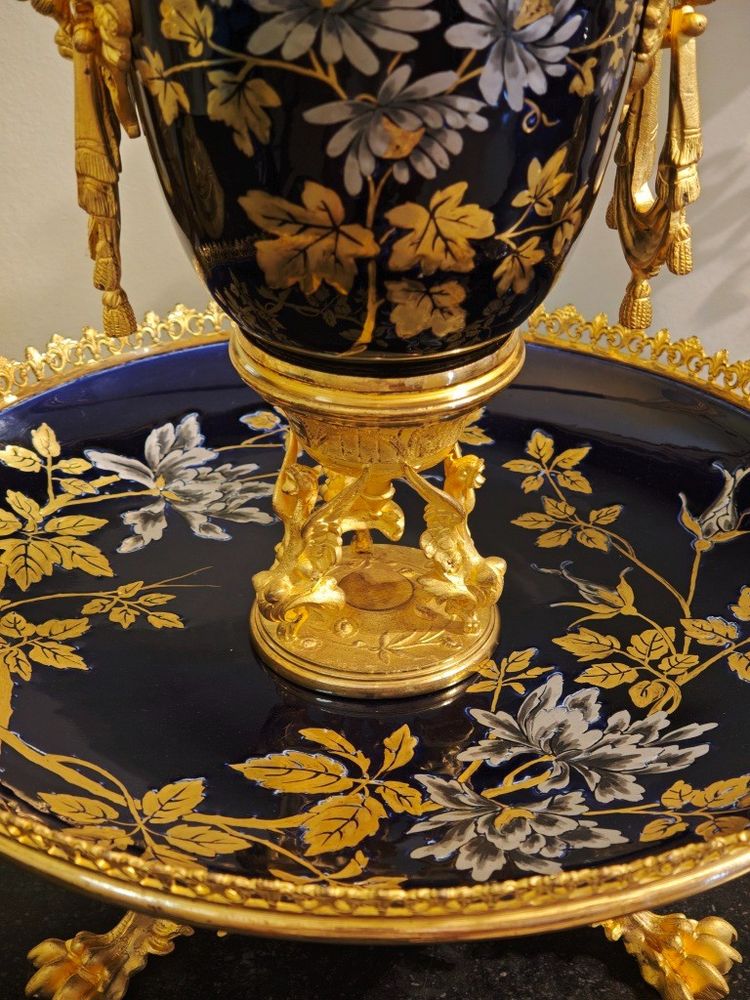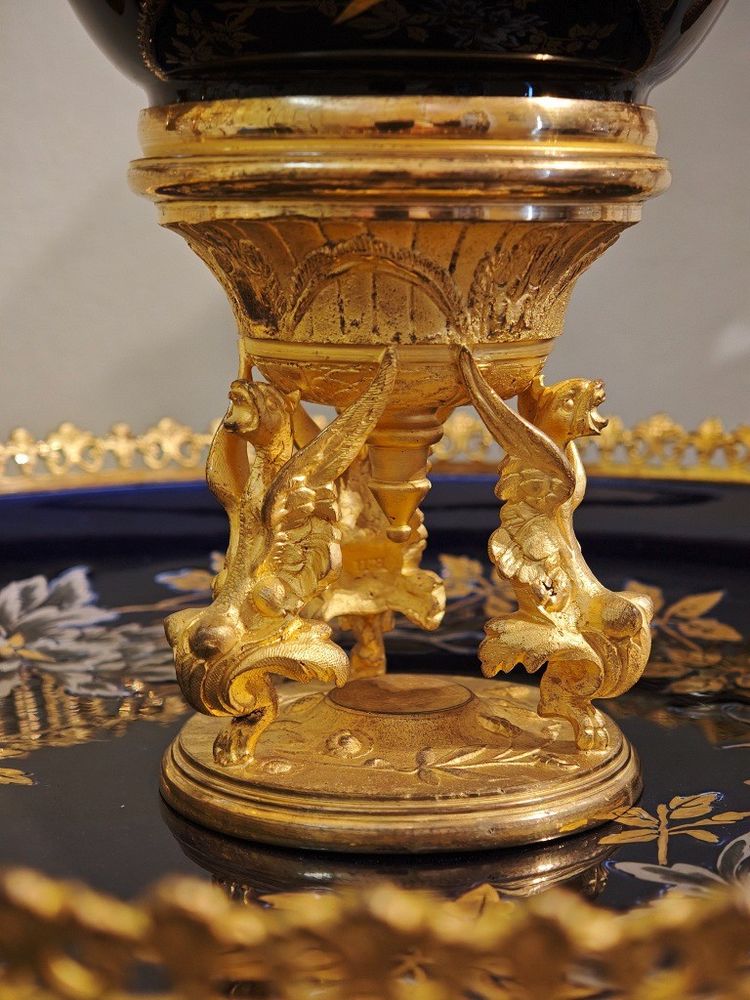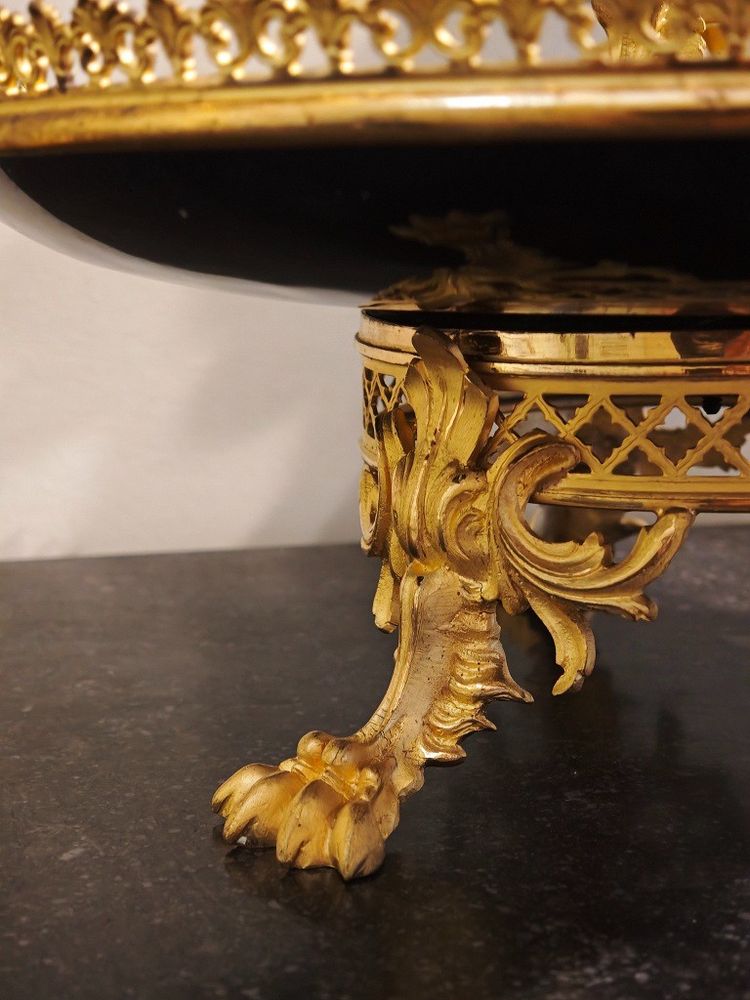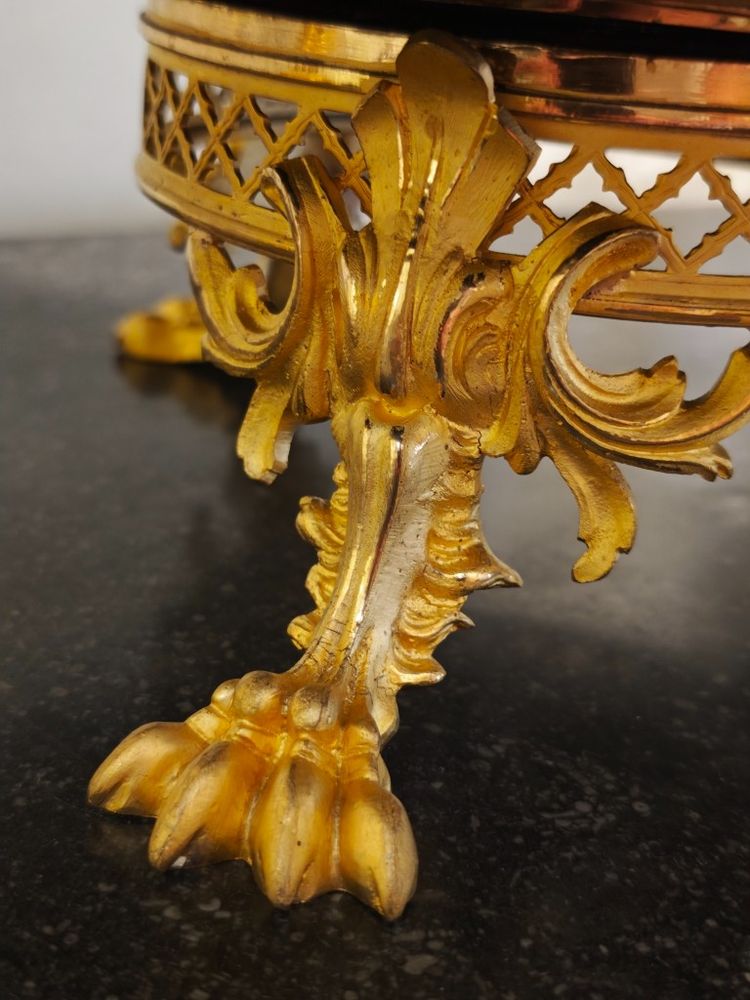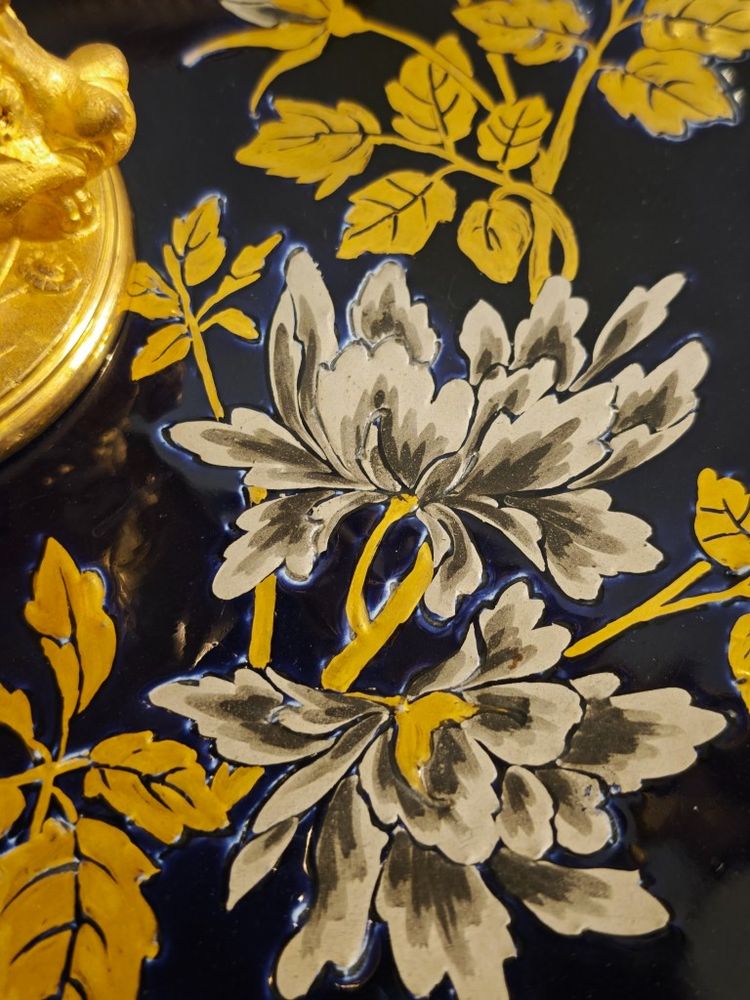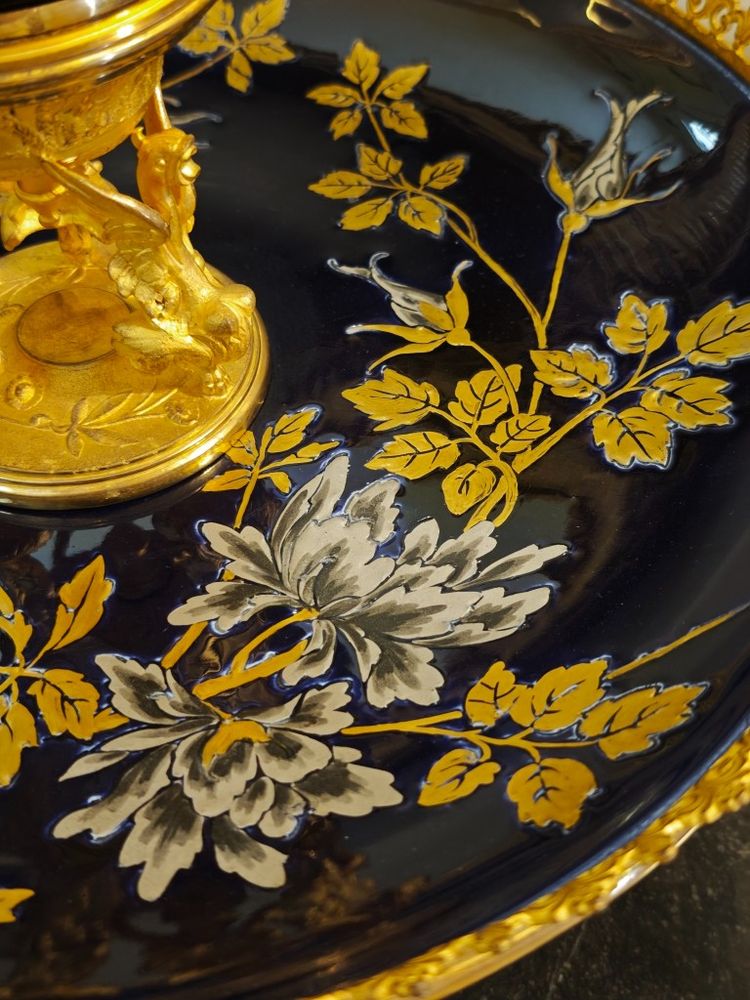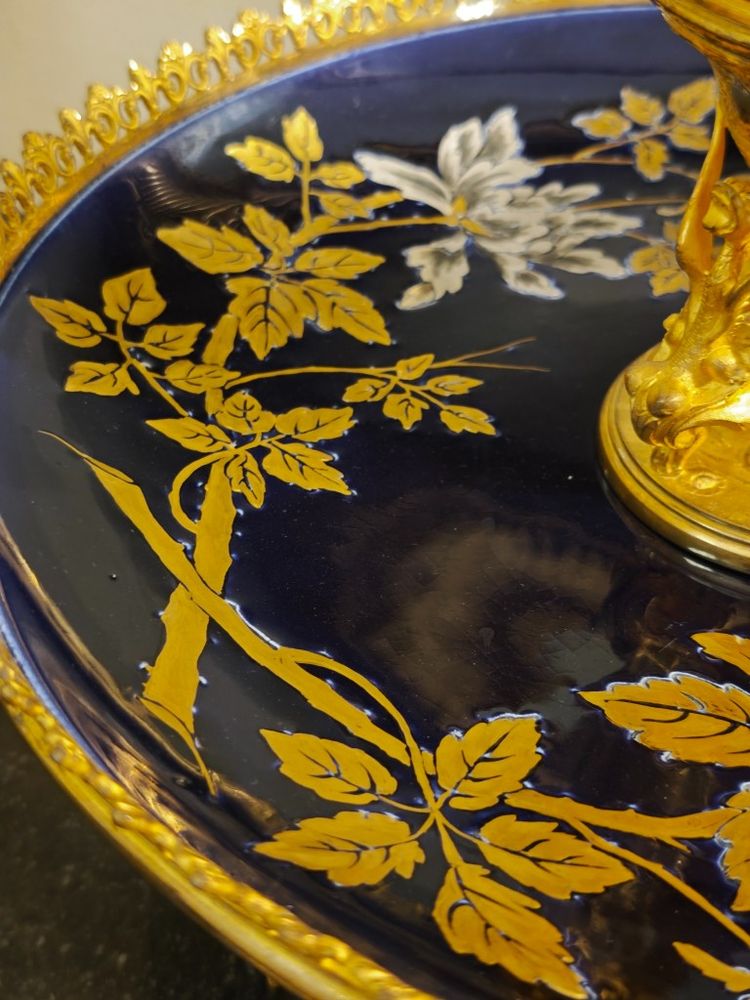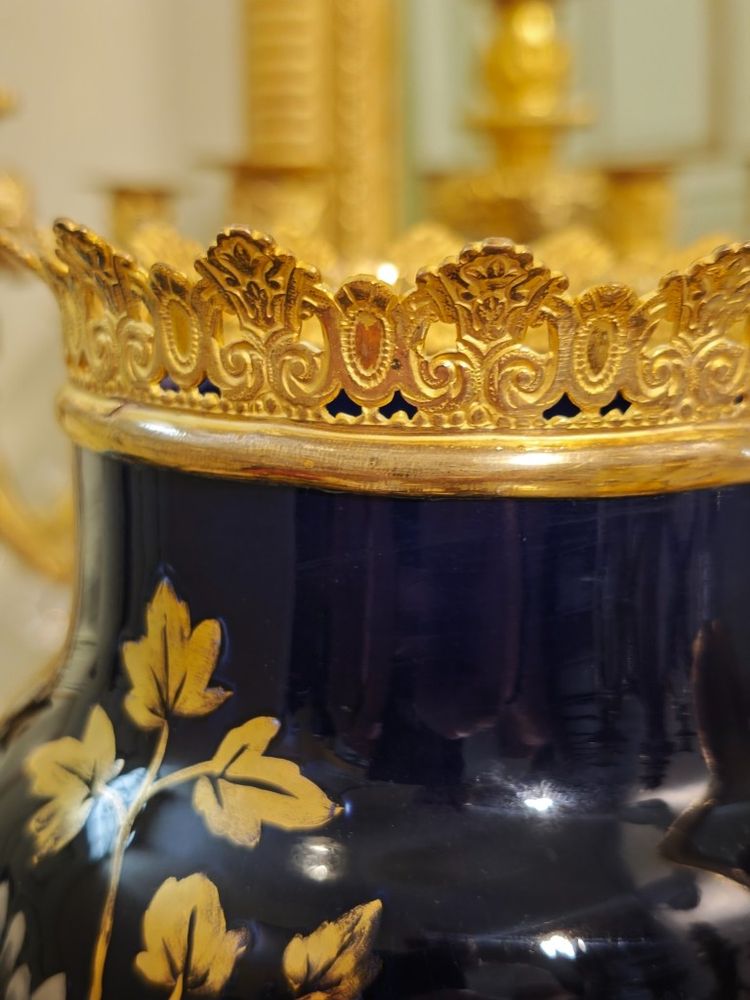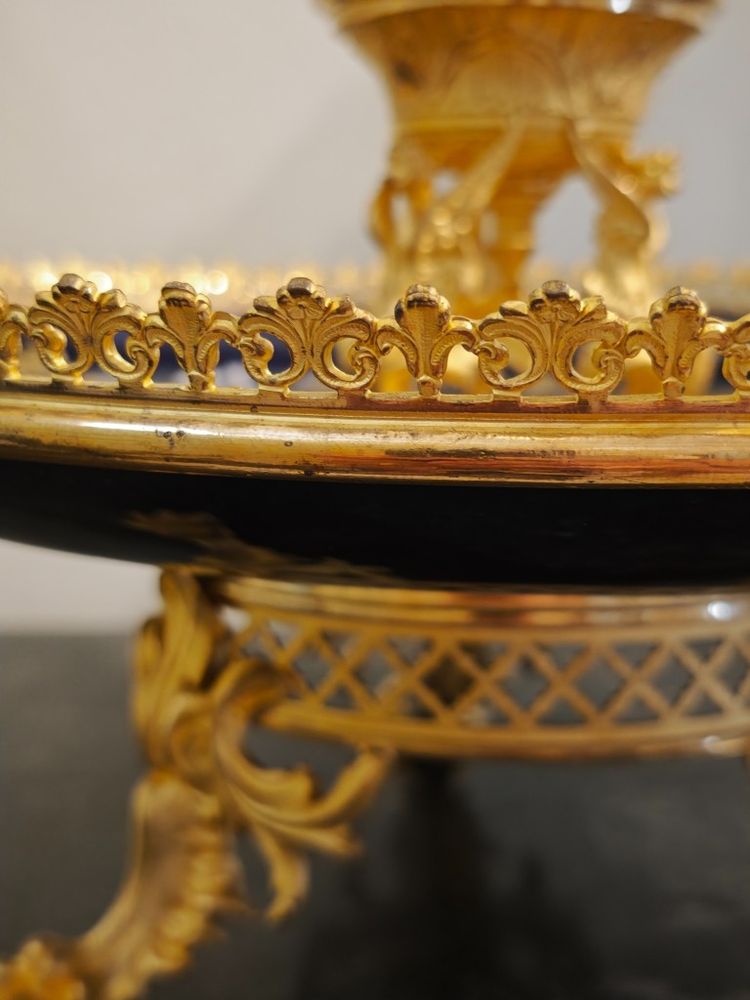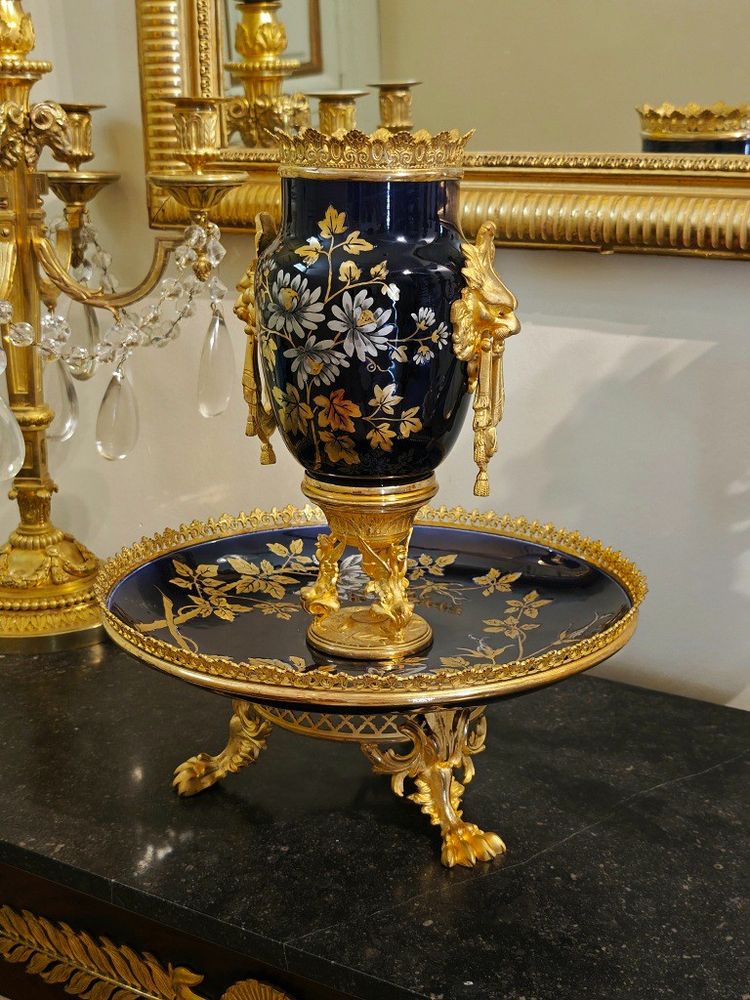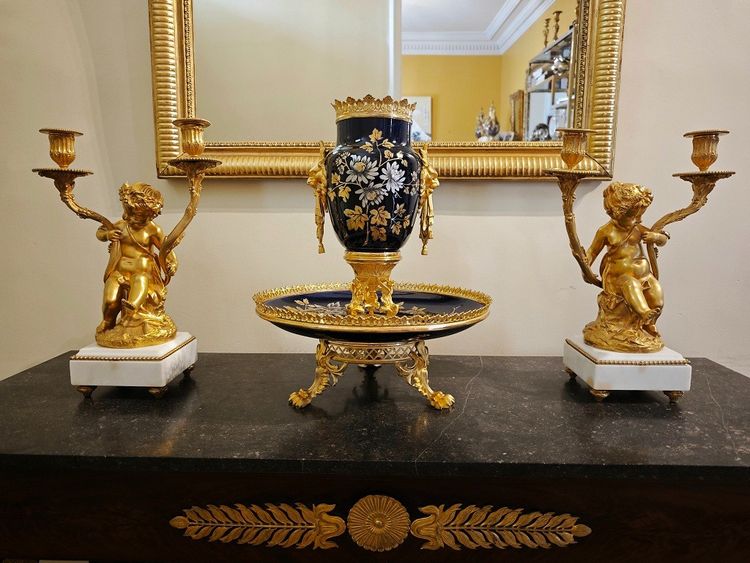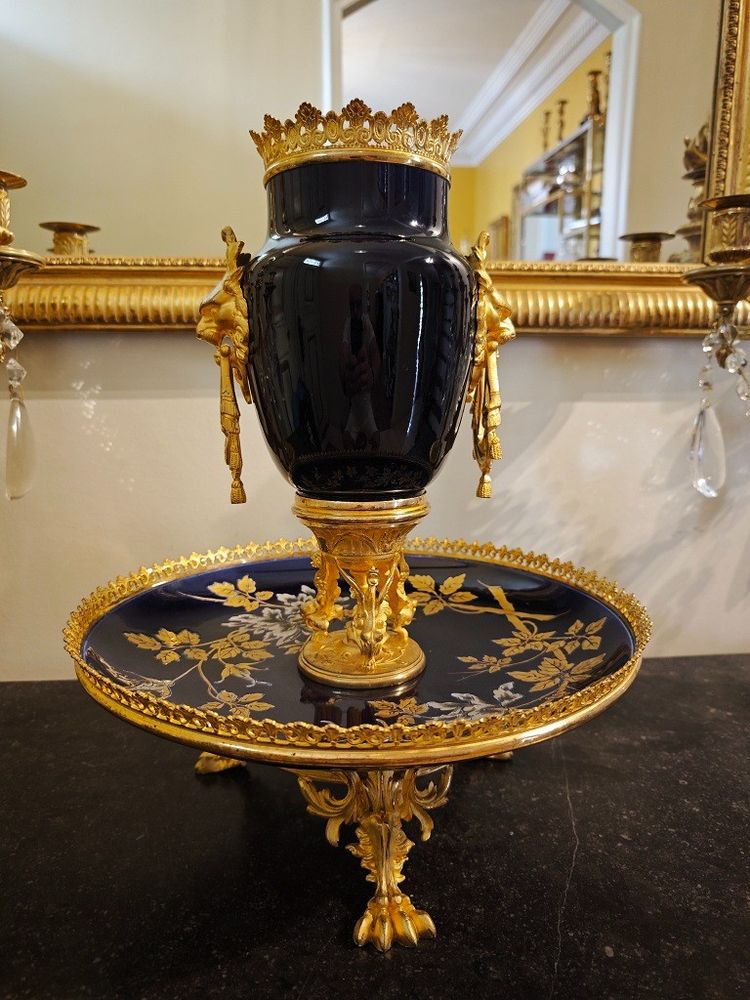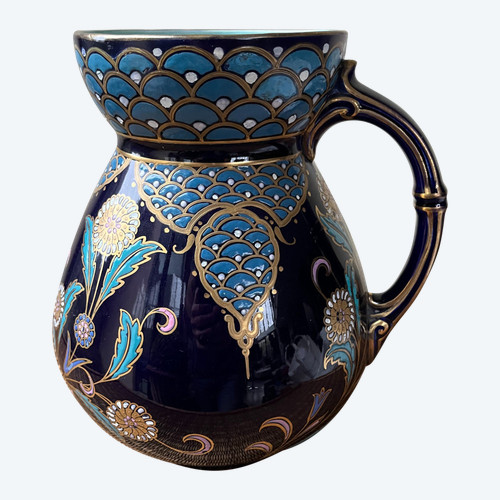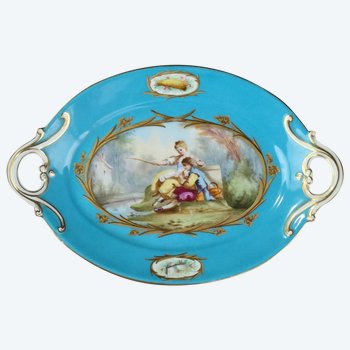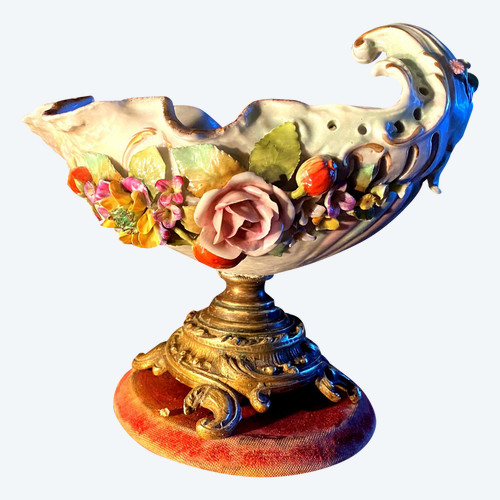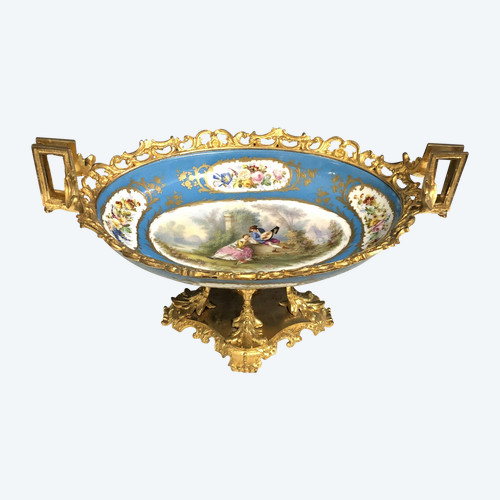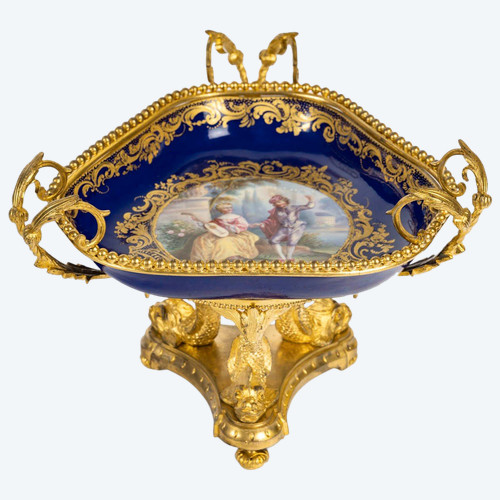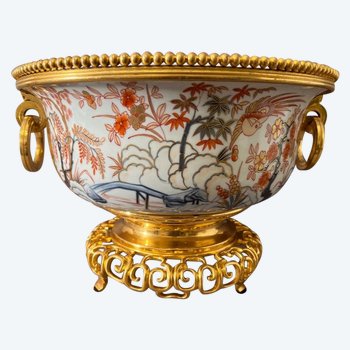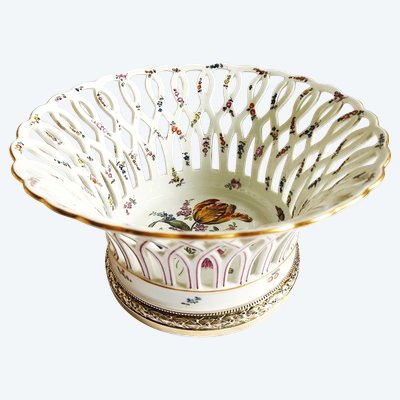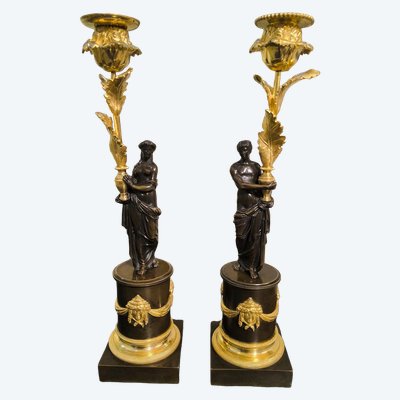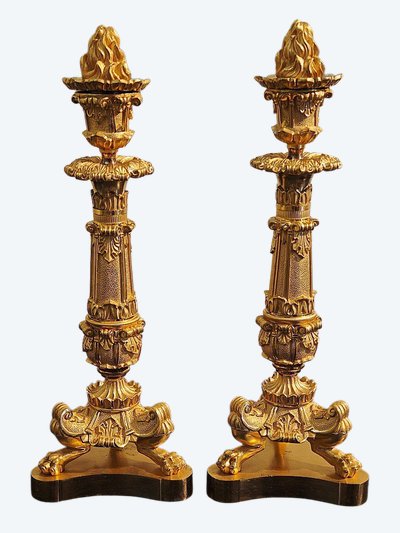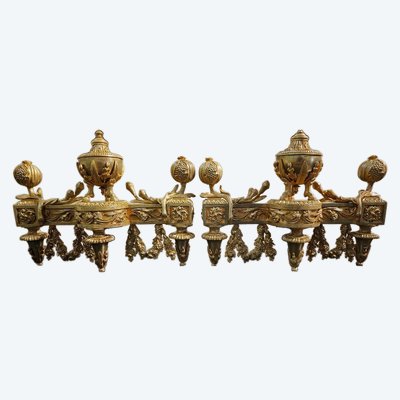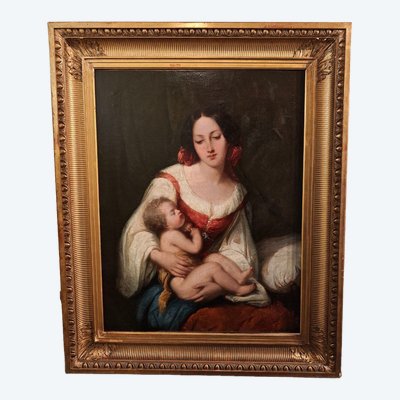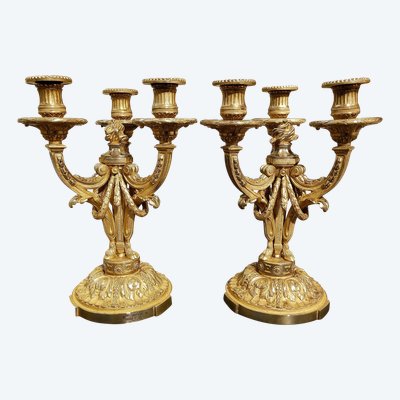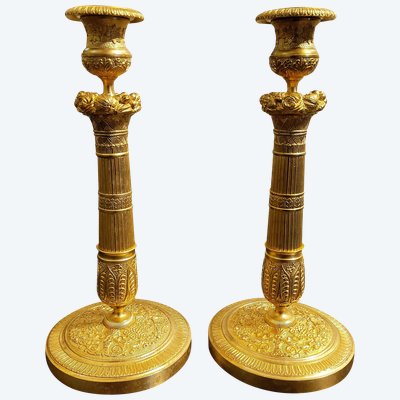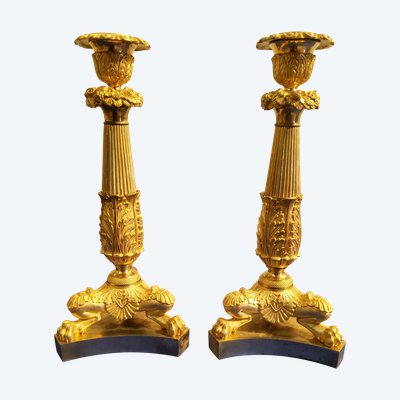This description has been translated and may not be completely accurate. Click here to see the original
Spectacular and rare Sarreguemines fine earthenware large bowl forming a centerpiece with a cobalt-blue glaze and Japanese floral decor composed of flowers, leaves and branches with gold and silver painted highlights and a sumptuous and very rich frame of chased and gilded Mercury bronzes in two matte and shiny tones. Typical Napoleon III period circa 1870, neo-classical style, original gilding.
Manufacture mark under the cup when dismantled (see photo.) SARREGUEMINES number 1191 A
Gilded bronzes Marked EH (Fondeur) on the inner legs of the chimeras. (See Photo)
Nice Dimensions Height 41 cm Width 34 cm Depth 34 cm
Typical XIX Napoleon III circa 1870 neo-classical style.
Condition report: Superb condition, exceptional original Mercure gilding with a magnificent play of mattes and brilliants throughout. Complete, No accidents. No restorations. Magnificent painted decoration in gold and silver highlights with a deep and very powerful cobalt blue. Minimal traces of use and age.
Architectural description :
This ceremonial piece is distinguished by its elaborate, harmonious structure:
- Upper part: A slender vase crowns the piece. It is flanked by two lateral handles sculpted as lion heads with imposing manes. Antique-style drapery emerges from their jaws, finely detailed right down to the trimmings. The neck of the vase is encircled by an openwork gallery, decorated with palmettes and interlacing. The main face of the vase repeats the Japanese floral design, enhanced with gold and silver.
- Central support: The vase rests on three majestic winged chimeras. Their bodies are richly adorned with moldings, drapery and floral scrolls, giving the piece great presence.
- Lower bowl: In the center, a wide, deep circular bowl features a painted decoration of gold and silver flowers, in keeping with the Japanese spirit of the period. The rim of this bowl is also embellished with an openwork gallery of stylized lilies.
- Base: The set rests on an elegant tripod base. Each foot, featuring a lion's paw with claws, is topped with stylized acanthus leaves. An openwork spacer, with a grid motif and various moldings, ensures stability and completes the aesthetics of this exceptional work.
Biblio:
Deep blue is considered the fetish color of Persian ceramics, a culture of great interest to earthenware makers in the second half of the 19th century.
Manufacture de Sarreguemines:
Although the Sarreguemines factory was founded in 1790, the arrival of Paul Utzschneider at the factory's helm in 1799 marked the beginning of the establishment's renown. From then on, the factory developed and diversified its production: fine earthenware, porcelain stoneware and decorative majolica tiles. Majolica became the glory of the factory, making Sarreguemines one of the most important earthenware centers in Europe. In the world of interior design, Sarreguemines' artistic orientation has always followed fashion and the most avant-garde trends. For example, Orientalist trends are to be found in the production of the Romantic years (1830-1840), while the Japanese world is widely represented between 1860 and 1900. Similarly, the popularity of seaside resorts gave rise to a large production of aquatic and marine themes from the 1880s onwards.
Provenance :Private Collection
Extra secure worldwide parcel. Tracking number and notifications.<!--/data/user/0/com.samsung.android.app.notes/files/clipdata/clipdata_bodytext_250628_105133_169.sdocx--> <!--/data/user/0/com.samsung.android.app.notes/files/clipdata/clipdata_bodytext_250628_105052_528.sdocx-->
Ref: DG7R4ZTJF9




